Hiking in the Sierra Nevada mountains during summer was the escape I needed from the heat of southern Spain. Crisp mountain air, the scent of pine trees, and alpine lakes glittering in the sunlight—this corner of Andalusia feels like a world apart. Every trail took me through ancient white villages scattered across the foothills, especially the hidden gems of the Alpujarras.
On my trip here, I wandered along quiet paths lined with wildflowers and met locals who were happy to share their traditions. The Alpujarras, in particular, gave me a peaceful break from crowded tourist spots, with cool breezes and jaw-dropping mountain views.
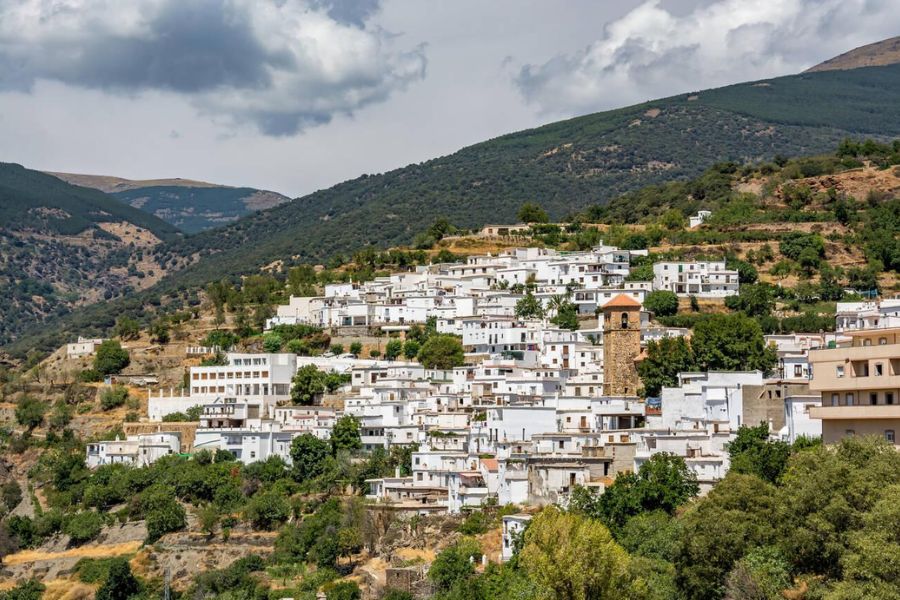
Exploring these mountain villages and rugged trails around Granada really changed how I see summer trips in Spain.
Planning a Summer Escape to the Sierra Nevada
Planning a trip to the Sierra Nevada isn’t quite like booking a standard holiday. I had to figure out high-elevation trails, what gear to pack, and how to keep things safe and comfortable in the mountains.
Best Time to Hike
I found out fast that timing matters in the Sierra Nevada. Summer—late June through early September—brings warm days, fewer rainstorms, and wildflowers that make the landscape look like a painting.
Early summer sometimes leaves snow on the highest passes above 2,500 meters, especially near Mulhacén or Veleta. By July, most routes open up, and temperatures down in Granada and Andalucía get intense, so the mountain air feels even better.
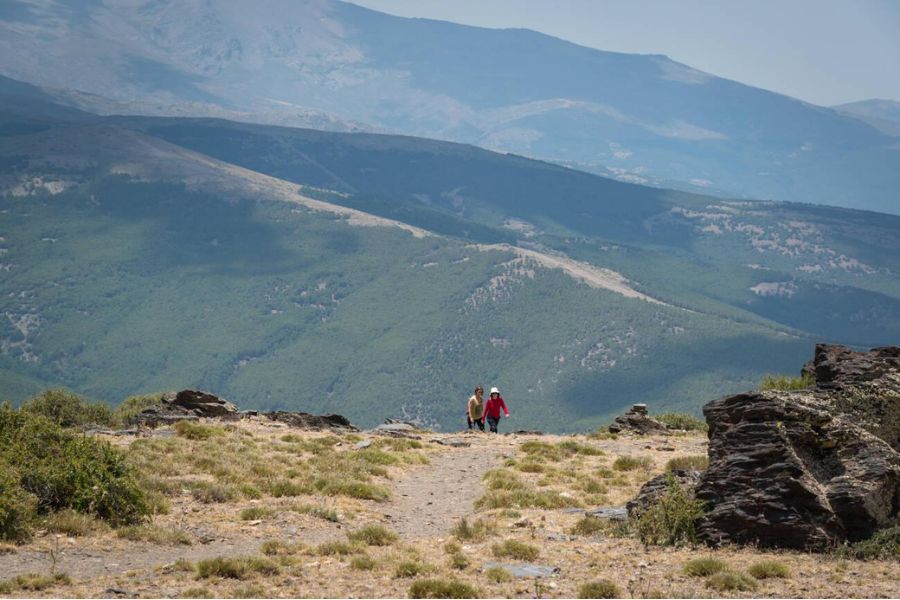
Even in midsummer, I packed for chilly nights. It dropped below 10°C after sunset, especially near the peaks or in the remote spots between Almería and the villages of Las Alpujarras.
Choosing Trails and Trail Types
Picking the right trail in the Sierra Nevada really depends on my mood and how much energy I have. I love that the region offers gentle walks through chestnut groves in Las Alpujarras, but also tough climbs like Mulhacén—the highest point on the Iberian Peninsula.
Marked routes connect whitewashed villages like Pampaneira, Bubión, and Capileira. These trails wind through olive terraces, rivers, and pine forests, perfect for slow exploration.
For more of a challenge, there’s the steep trek from Trevélez to the summit, or wild circuits near Almería.
Trail Types Table:
| Trail Type | Difficulty | Typical Features |
|---|---|---|
| Village-to-village | Easy-Mod | Scenic, cultural, lower elevation |
| Summit Routes | Hard | Rocky, steep, panoramic |
| Alpine Lakes | Moderate | Lakes, meadows, streams |
Sometimes, booking with an agency helps if trail logistics feel overwhelming. They often include lodging, transfers, and meals.
Essential Gear for Mountain Adventures
Packing for a summer hike here is nothing like a walk in the park. I always bring layers—a light fleece, a windbreaker, and quick-drying clothes. The sun hits hard at high elevations, so sunglasses, a hat, and SPF 50+ sunscreen are essentials.
Water isn’t always easy to find on trails, especially along ridgelines near Almería. I never forget my filter or purification tablets. My hiking boots handle rough ground, and trekking poles save my knees on long descents.
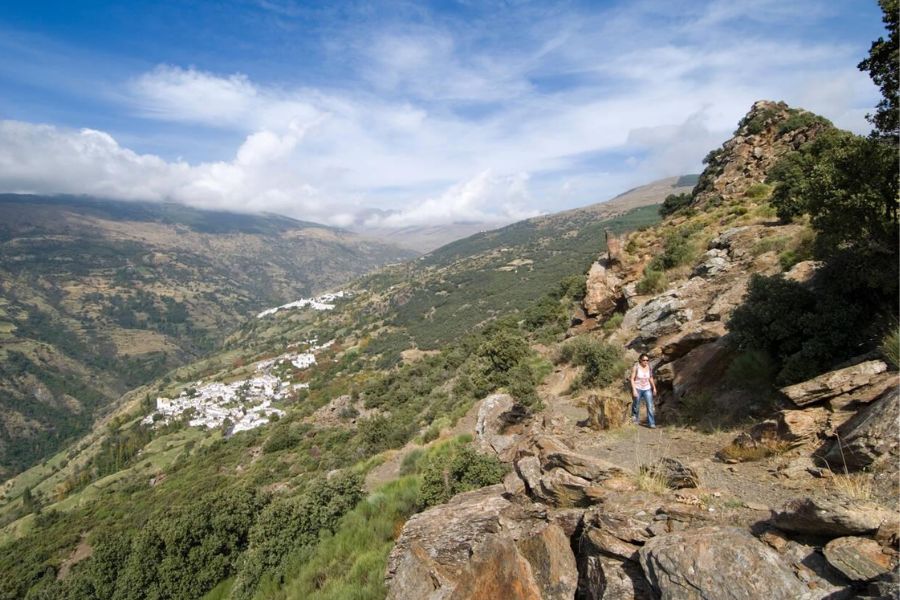
In my daypack, I toss in:
- GPS device or smartphone with offline maps
- Energy snacks and water (at least two liters)
- Lightweight rain jacket
- Mini first aid kit
- Local paper map (many villages sell them)
Navigating with GPS and Local Guides
Navigation here is a mix of high-tech and old-school. GPS helps a lot, especially when clouds roll in or I wander off the main trail near Granada or deep into Andalucía. Offline maps calm my nerves since cell signal disappears in mountain valleys.
Still, I trust more than just technology. Local guides—often based in Las Alpujarras—know shortcuts, update me on water sources, and share stories about the land and its culture. Booking a guide or checking in with a regional hiking agency in Granada or Almería makes sense on longer or less-marked routes.
Reliable navigation, whether electronic or human, turns the adventure from a risky guess into a real exploration.
Experiencing the Cool Mountain Air
Chasing shaded paths in the Sierra Nevada means cool breezes, even while the rest of southern Spain swelters. The mountains aren’t just about the views—they offer relief from the heat, support unique plants, and shape the rhythms of water and life that survive summer droughts.
Early Morning Adventures
Mornings up here feel different from anywhere else I’ve hiked in Spain.
Right before sunrise, the air is crisp and a bit damp. Walking out from my small guesthouse in the Alpujarras, I’d spot beads of dew clinging to grass and wildflowers—a rare treat compared to the dry plains below.
With temperatures low for the first few hours, long treks feel easy and comfortable. Birds—golden orioles and warblers—sing from the first light, their songs echoing through the valleys.
I’d pass narrow streams and catch glimpses of snowy Sierra Nevada peaks reflected in tiny pools.
Tip: Start early for the coolest, quietest experience. By midday, the sun gets strong and shade vanishes fast at higher elevations.
Wildlife, Trees, and Unique Flora
The trees really give the Sierra Nevada its character.
Ancient chestnuts and tall poplars line trails near the villages, making green tunnels and shelter for hikers and animals. Oak forests cover the middle slopes, and high up, pines and junipers huddle close to the ground.
I often spot herds of mountain goats on rocky ledges or butterflies gathering near blooming wild herbs.
What always stands out is the mix of Mediterranean and alpine plants. Lavender, wild thyme, and bright blue gentians fill the air with fresh scents.
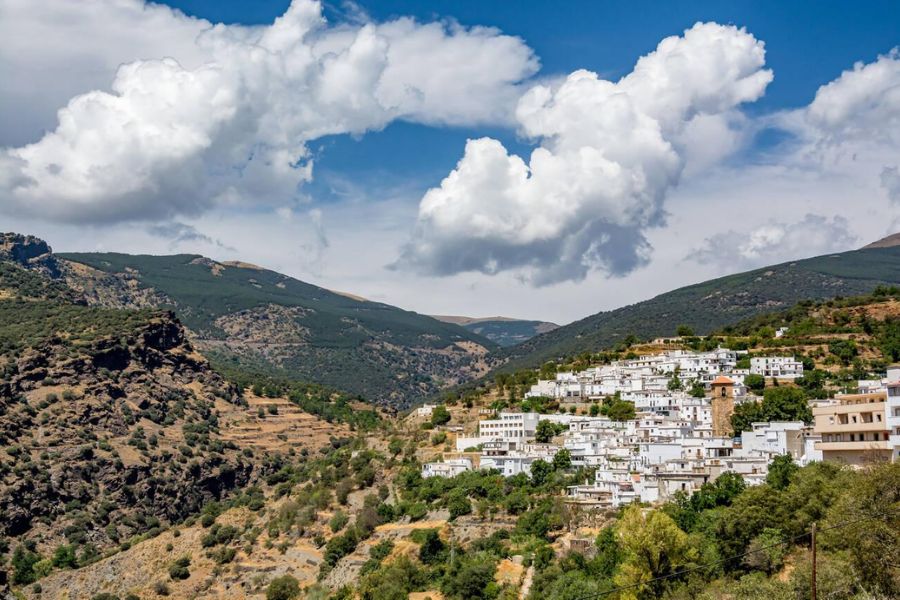
Under the trees, mossy stones stay cool and damp, with water trickling even in late July.
Common trees and flora:
| Tree/Plant | Traits |
|---|---|
| Chestnut | Broad canopy, edible nuts |
| Poplar | Fast-growing, tall |
| Juniper | Small berries, tough |
| Wild Thyme | Strong scent, purple |
Escaping the Heat and Dealing with Drought
Summer heat in Andalusia is brutal, but up here, the mountain air works like natural air conditioning.
Water is precious every summer. I watch irrigation channels (“acequias”) carry meltwater from the last snowfields down to terraced farmland near each village. Careful use makes every drop count.
Even in drought years, the forests and streams here run better than those in lowland Spain, though fire risk always lingers in the back of my mind.
Reservoirs tucked in narrow valleys collect snowmelt, supporting both old villages and travelers like me. When dry winds blow in the afternoon, I’m reminded how fragile this balance is—and how important the mountain’s cool, moist mass stays all summer.
Alpine Lakes and Hidden Water Gems
The Sierra Nevada is known for icy blue lakes tucked between peaks, offering sweet relief from the summer heat. These peaceful spots, filled with clear water, are perfect for hiking, swimming, and just soaking up the quiet.
Top Alpine Lakes to Explore
Some of the most beautiful places I’ve visited in the Sierra Nevada are its high mountain lakes. Laguna de las Yeguas, close to the Sierra Nevada ski station, is surrounded by snow in spring and wildflowers in summer.
If you want a quieter hike, Laguna Larga takes you off the main tracks, rewarding you with calm water and mountain views.
Laguna de la Caldera sits below the dramatic slopes of Mulhacén, the highest peak in mainland Spain. Its clear water reflects the rocky ridges above.
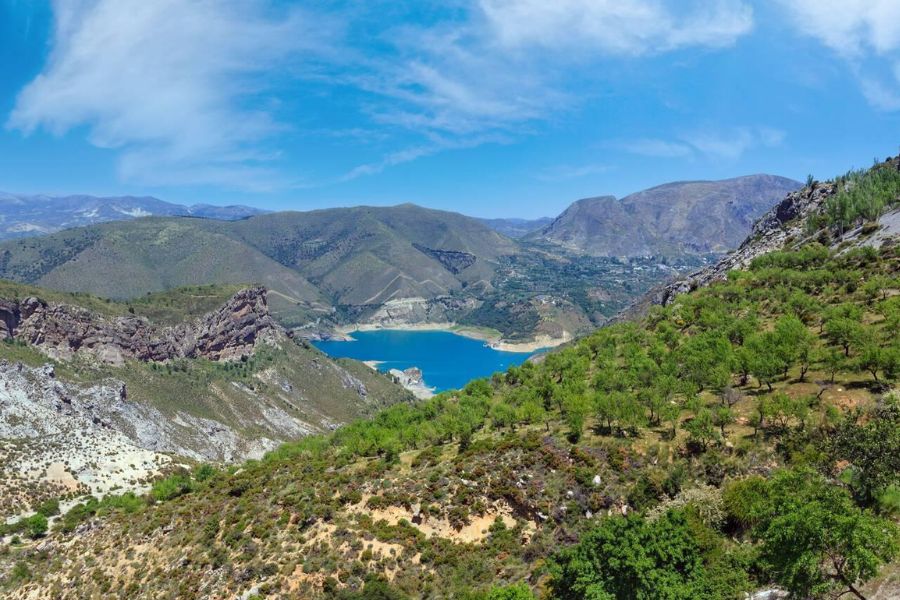
A few other favorites:
- Laguna Hondera
- Laguna de Río Seco
- Laguna de Vacares
Each lake has its own vibe, from rocky shorelines to grassy banks. Some are close to the trail, while others take hours of hiking—but all of them fill me with awe once I arrive.
Swimming Safely in the Mountains
Swimming in a cool mountain lake is tempting after a tough climb. Still, safety always comes first.
These alpine lakes stay cold even in July and August. I always dip a hand or foot in first to test the temperature; sudden cold can really shock your body.
I stick close to shore, since currents can be strong after snowmelt. If I can, I swim with a friend.
I try not to stir up mud or algae, keeping the water clear for the next hiker—and the wildlife that lives there.
Quick checklist before swimming:
- Check water depth and temperature.
- Never jump in without looking.
- Watch out for sharp rocks or slippery spots.
- Skip swimming if there’s algae bloom.
Legends and Enchantment Along the Shores
There’s something magical about these lakes. Local legends say nymphs and mysterious spirits hide in the mist above the water.
Old stories from Las Alpujarras tell of mountain monsters or “monstruos” that protect certain lakes. Villagers sometimes warn against swimming alone at dusk, since the mountains are full of secrets.
Whether it’s just the quiet or a real sense of enchantment, I always respect the mood of these hidden gems. Walking along the shores, I imagine ancient travelers stopping to rest, just like I do.
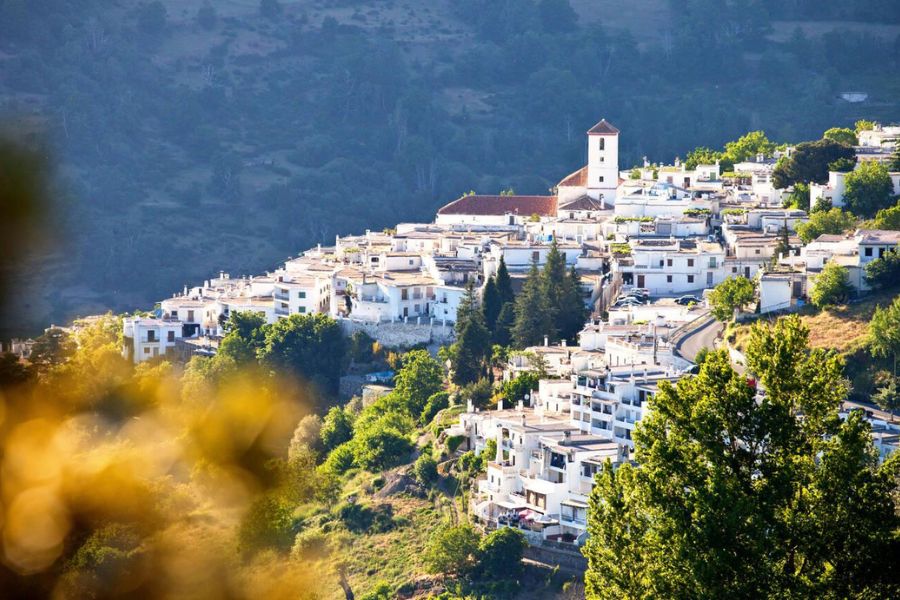
Every lake, from sparkling pools to windy water, seems to carry a memory of those who came before—and maybe even the legends themselves.
Villages of Las Alpujarras: Culture, Cuisine, and Heritage
The white villages of Las Alpujarras perch along the southern slopes of the Sierra Nevada. Exploring these mountain settlements, I discovered centuries-old traditions, bold flavors, and a patchwork of daily life shaped by both Moorish and Spanish heritage.
Pampaneira, Bubión, and Capileira
Pampaneira, Bubión, and Capileira stand out for their steep, winding streets and iconic whitewashed homes. All three villages cluster in the Poqueira Gorge and offer dramatic views of the mountains and valleys below.
As I wandered their narrow lanes, I noticed flower-filled balconies and small plazas where neighbors met to chat. Capileira, the highest, was once guarded by ancient city walls—some remains still hide in the side streets.
These villages come alive in the late afternoon, with the call to prayer echoing from church towers as locals head to confession. It feels like time slows down just for you, letting every detail sink in.
Local Gastronomy Experiences
Food in Las Alpujarras brought me closer to the heart of Andalusia. Local dishes like plato alpujarreño—fried eggs, potatoes, jamón, and spicy sausage—filled me up after long hikes.
Cheese from the mountains, fresh trout from cold streams, and sweet pastries dusted with sugar show off Granada’s rural cuisine. I especially loved sitting outside at family-run taverns, watching plates of olives and tapas arrive with cool glasses of local wine.
Meals here always felt relaxed and unhurried. Each bite seemed to tell a story passed down by village cooks and local farmers.
Arts, Craftsmanship, and Illustrations
Artists and craftsmen in the Alpujarras keep old skills alive. Painted ceramics, handwoven rugs called jarapas, and simple wooden carvings fill the shelves of tiny workshops.
I met artisans who drew illustrations of village scenes, inspired by the white buildings and rugged hills. Their art really captures the spirit of daily life—shepherds with flocks, quiet chapels, and mosaic-like city walls fading into the landscape.

Many crafts tell stories of the region’s mixed heritage, from North African influences to Christian traditions. These pieces make perfect souvenirs, each holding a memory of the mountain villages I explored.
Nearby Wonders: Exploring the Andalusian and Mediterranean Connections
When I wandered past the Sierra Nevada, I found myself stumbling into whole new worlds, all tangled up by geography and centuries of history. Granada’s Moorish charm, ancient ruins, and the blue edge of the Mediterranean—these places connect in ways that honestly surprised me.
A Day Trip to Granada and the Alhambra
I woke up early, the mountain air still cold, and hit the road for Granada. It’s less than an hour’s drive from Las Alpujarras.
As I walked into the city, narrow streets twisted open with the scent of orange blossoms everywhere. I caught stray guitar chords drifting from the plazas.
I headed straight for the Alhambra, a UNESCO World Heritage site perched above the white-washed Albaicín. The palace rises among terraced gardens, reflecting pools, and Moorish arches carved with old, winding script.
If you want to visit, book tickets online a few days early—they disappear fast.
The Generalife gardens, right next to the palaces, invite you in with shady cypress paths and some of the best city views. After wandering, I grabbed tapas in the center—couldn’t resist picking up a handful of olives and some jamón to take back up the mountain.
Atlas Mountains, Sardinia, and the Mediterranean Mosaic
It kind of blew my mind how obvious the Mediterranean connections feel here. On clear afternoons, I’d squint and almost see the Atlas Mountains in Morocco across the water.
Travelers in the Sierra Nevada—hikers, history fans, you name it—swap stories about trekking in North Africa or catching ferries to Mediterranean islands.
Places like Sardinia in Italy aren’t far at all; you can hop on a quick flight or even a ferry from southern Spain. The same breeze that cooled me on a mountain trail also sweeps over Sardinia’s coastline, carrying familiar notes of food and music.
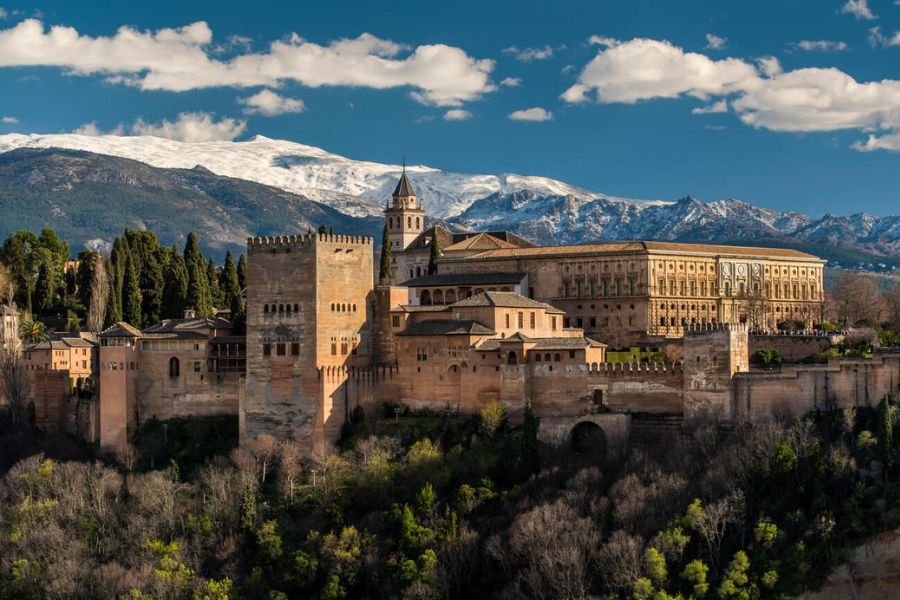
These ties go way beyond geography. Trade, recipes, and culture have blended across Andalusia, Sardinia, and North Africa for ages.
Between hikes, I’d poke around for cheap flights to Cagliari or check ferry schedules to Tangier. Knowing so many cultures and landscapes sat just over the horizon made my time here feel that much richer.
Traces of History: Archaeological Sites, Crusader Legends, and Old Agency Tales
Andalusia’s land just feels thick with stories, doesn’t it? In the foothills near Ubeda and across the sun-baked Tabernas desert, I stumbled across traces of old settlements, Roman roads, and even a few film sets for Westerns.
Some locals love to share tales about the times when crusaders and Berbers passed through. You can spot hints of their presence in crumbling watchtowers or strange carvings that seem to pop up out of nowhere.
I wandered into remote archaeological sites—sometimes there’s just a single signpost and nothing else. Shards of pottery and stone told me about Roman traders and Islamic scholars who once lived here.
I didn’t make it to Oman or farther east this time, but I picked up stories about traders moving goods and legends from Granada all the way to Oman’s old cities.
Every day out on those trails, I felt like past civilizations surrounded me. Walking those ancient paths, knowing people from so many worlds shaped them, made each step feel a bit more meaningful.

